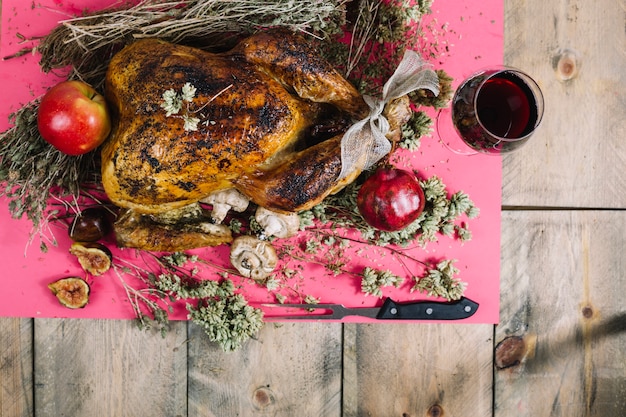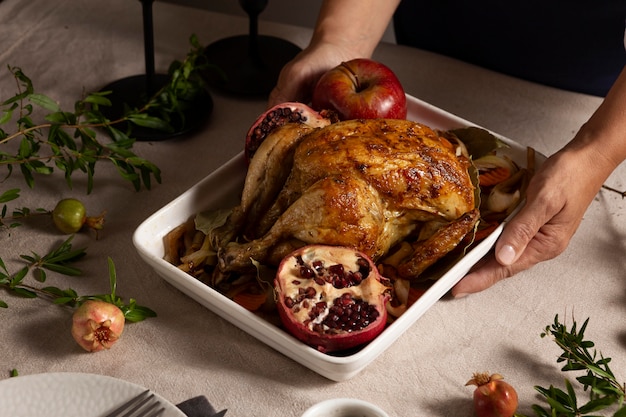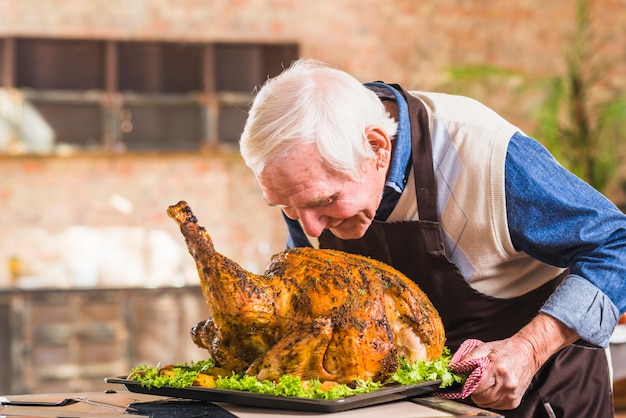Let's talk turkey, shall we? We're talking about a proper bird, an 11lb behemoth, ready to become the centerpiece of your festive feast. As someone who's been wrestling with these hefty birds for years, I've learned a few things along the way. So grab a cuppa, settle in, and let’s get cooking!
(Part 1) The Turkey: Choosing Your Bird

The first step is choosing your turkey. Now, I'm a firm believer in free-range birds, but that's just me. You can find them at most good butchers or supermarkets. Look for a plump breast, a lovely golden colour, and don't be afraid to give it a good prod. You want it to feel firm, but not rock hard. It should have a good bounce.
A Word on Weight: 11lb and Beyond
An 11lb turkey is a good size for a decent-sized family or gathering. It should provide enough meat for everyone, with some leftovers for delicious sandwiches or soup. But if you're cooking for a bigger crowd, you might want to consider a larger bird. Remember, turkey is usually sold by weight, so you can easily find a bird that suits your needs.
Frozen or Fresh?
This is a personal preference. frozen turkeys are readily available and can be kept in the freezer for a long time. Just make sure to defrost it properly before cooking. Fresh turkeys are also a good option, but they have a shorter shelf life.
(Part 2) The Prep: Getting Your Bird Ready to Roast

Now, your turkey is chosen, it's time to get it ready for the big roast.
Washing: A No-No
First things first: Don't wash your turkey! It might seem like a good idea to give it a rinse, but washing actually spreads bacteria around your kitchen. It's better to simply pat it dry with paper towels.
Brining: A Matter of Preference
Now, let's talk brining. It's a topic that divides turkey enthusiasts. Some swear by it, others think it's a waste of time. Personally, I've tried both ways and I find brining does make the turkey more succulent. But it also adds a bit of hassle. You'll need to soak your turkey in a salt and water solution for several hours, which can be a bit of a logistical challenge, especially if you're short on fridge space. Ultimately, it's up to you. If you have the time and space, give it a try. If not, don't worry – you'll still get a delicious turkey.
Stuffing: Inside or Out?
Stuffing is another big decision. You can stuff the turkey itself, or cook it separately. Stuffing the bird can be a bit risky, as you need to make sure it cooks through properly. If you choose to stuff the turkey, make sure you use a meat thermometer to check the stuffing's internal temperature reaches 165°F (74°C). Personally, I prefer to cook my stuffing separately, just to be on the safe side. It's a bit easier and ensures the stuffing is cooked through properly.
(Part 3) Butter, Herbs and Seasoning: Making Your Turkey Shine

Now, it's time to get your bird looking its best. This is where you can really personalize your turkey.
A Buttery Base
I like to rub my turkey with butter. This helps to keep the meat moist and adds a delicious flavour. You can use unsalted butter or even a flavoured butter like garlic or herb butter.
A Sprinkle of Herbs
Next, I add a sprinkle of fresh herbs. Rosemary and thyme are classics, but you can use whatever you fancy. Sage, oregano, and even a bit of parsley all work well.
Seasoning: The Final Touch
Don't forget to season your turkey! Salt and pepper are essential, but you can also add other spices like paprika, cayenne pepper, or even a pinch of nutmeg. Just be careful not to overdo it.
(Part 4) The Roast: Into the Oven It Goes!
The big moment has arrived! Your turkey is prepped and ready to go into the oven.
Pre-heating is Key
Always preheat your oven to the correct temperature. You'll find the exact temperature in the recipe you're following, but 325°F (165°C) is a good starting point.
The Roast Time: 11lb Turkey
An 11lb turkey will take around 3-4 hours to cook. But it's not as simple as just popping it in the oven and setting a timer. There are a few things to consider.
Stuffing Inside?
If you're stuffing your turkey, you'll need to add about 30 minutes to the total cooking time. This is because the stuffing needs to cook through properly.
Unstuffed turkey?
For an unstuffed turkey, you can expect it to take around 3-3.5 hours. You can use the trusty "15 minutes per pound" rule as a guideline, but again, the meat thermometer is your friend!
(Part 5) The Meat Thermometer: Your Turkey's Best Friend
I can't stress this enough: a meat thermometer is a must-have for roasting a turkey. Forget the old "15 minutes per pound" rule; it's not reliable. The only way to know for sure that your turkey is cooked through is to use a meat thermometer.
Where to Insert the Thermometer
Insert the thermometer into the thickest part of the thigh, making sure it's not touching the bone. You want to check the internal temperature of the meat, not the bone.
The Safe Temperature
The turkey is fully cooked when the internal temperature reaches 165°F (74°C). Don't settle for anything less! Undercooked turkey can be dangerous, so it's crucial to make sure it's cooked through properly.
(Part 6) Resting: A Crucial Step for a juicy turkey
Once your turkey has reached the desired internal temperature, don't rush to carve it! This is a crucial step that many people skip, but it's essential for a juicy turkey.
Let it Rest for 30 Minutes
Let the turkey rest for at least 30 minutes, covered with foil. This allows the juices to redistribute throughout the meat, making it more tender and succulent.
Why Resting Matters
When you carve a turkey immediately after it comes out of the oven, the juices run out, leaving you with dry meat. By letting the turkey rest, you allow those juices to reabsorb, ensuring a juicy and delicious meal.
(Part 7) Carving Time: A Celebration of Flavour
After the turkey has rested, it's time to carve! This is the exciting part!
Tools of the Trade
You'll need a sharp carving knife and a good cutting board. If you're not used to carving a turkey, find a video online. There are some great tutorials that can show you the ropes.
Share the Bounty
Once you've carved the turkey, you can serve it with all the trimmings. mashed potatoes, gravy, cranberry sauce, stuffing, roasted vegetables - the possibilities are endless! It's a celebration of flavours, textures, and the art of cooking.
(Part 8) Leftovers: Delicious Possibilities Await
Don't let those leftovers go to waste! They're perfect for all sorts of delicious dishes.
turkey sandwiches
Classic turkey sandwiches are always a winner. Use leftover turkey, stuffing, cranberry sauce, and a bit of mayonnaise for a satisfying lunch or dinner.
turkey soup
Turkey soup is another great way to use leftovers. You can add vegetables, noodles, and rice for a hearty and comforting meal.
turkey salad
Mix up a delicious turkey salad with mayonnaise, celery, and onions. Serve it on bread or crackers, or use it as a filling for sandwiches.
(Part 9) FAQs: Your Turkey Questions Answered
Here are some of the questions I get asked most often about cooking turkey.
What if my turkey isn't fully cooked?
If your turkey isn't fully cooked, you'll need to cook it for longer. Check the internal temperature with a meat thermometer. Don't take any chances with undercooked poultry!
What if my turkey is overcooked?
There's not much you can do if your turkey is overcooked. It's going to be dry, so try to compensate with lots of gravy and moist side dishes.
Can I cook the turkey at a lower temperature?
You can cook the turkey at a lower temperature, but it will take longer. I wouldn't recommend going below 300°F (150°C).
What's the best way to keep the turkey moist?
The best way to keep the turkey moist is to cook it slowly and use a meat thermometer to ensure it doesn't overcook. You can also try brining the turkey or basting it during cooking.
What if I don't have a meat thermometer?
If you don't have a meat thermometer, you can use the "15 minutes per pound" rule as a guideline. But it's not as accurate as using a thermometer, so it's best to err on the side of caution and cook the turkey for a little longer.
(Part 10) Conclusion: Your Turkey Masterclass
That's it! You're now equipped to tackle an 11lb turkey with confidence. Remember, the key is to plan ahead, use a meat thermometer, and don't be afraid to experiment. Enjoy the process and, most importantly, enjoy the delicious results!
Everyone is watching

Prime Rib Roast Cooking Time Chart: Per Pound Guide
Cooking TipsPrime rib roast. Just the name conjures images of lavish dinners, crackling fires, and hearty laughter. It’s ...

How Long to Bake Potatoes in the Oven (Perfect Every Time)
Cooking TipsBaked potatoes are a staple in my kitchen. They're incredibly versatile, delicious, and surprisingly easy to m...

Perfect Rice Every Time: The Ultimate Guide to Cooking Rice
Cooking TipsAs a self-proclaimed foodie, I've always been a bit obsessed with rice. It's the foundation of countless cuisi...

The Ultimate Guide to Cooking Asparagus: Tips, Techniques, and Recipes
Cooking TipsAsparagus. The mere mention of this spring delicacy conjures up images of vibrant green spears, crisp and burs...

Ultimate Guide to Cooking the Perfect Thanksgiving Turkey
Cooking TipsThanksgiving. Just the word conjures up images of overflowing tables laden with delicious food, the scent of r...
